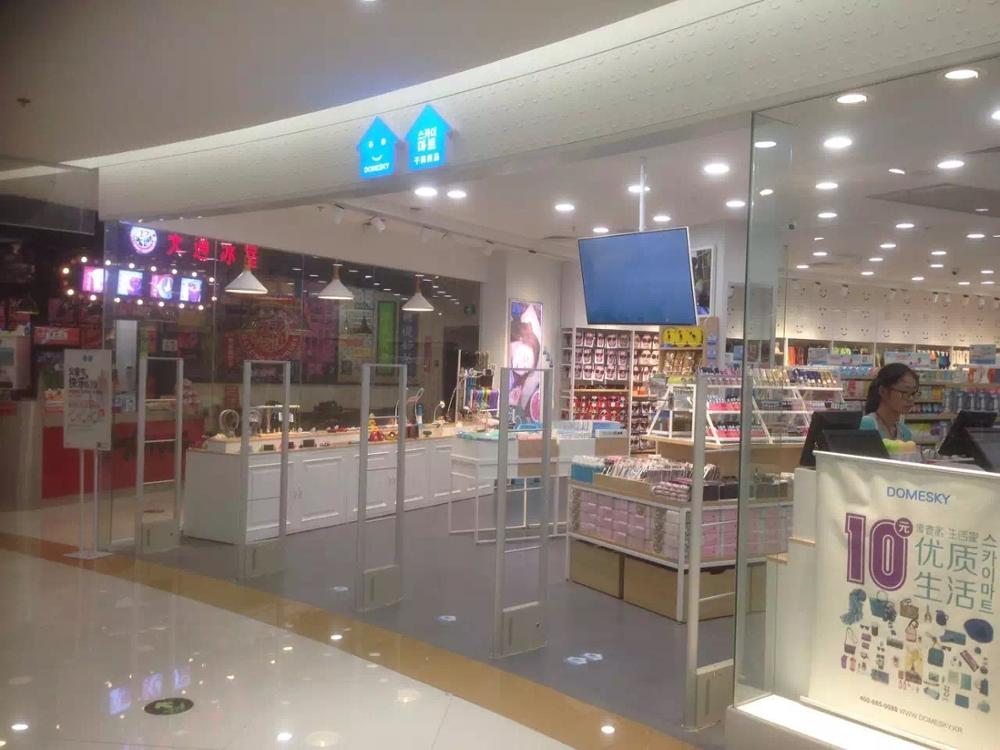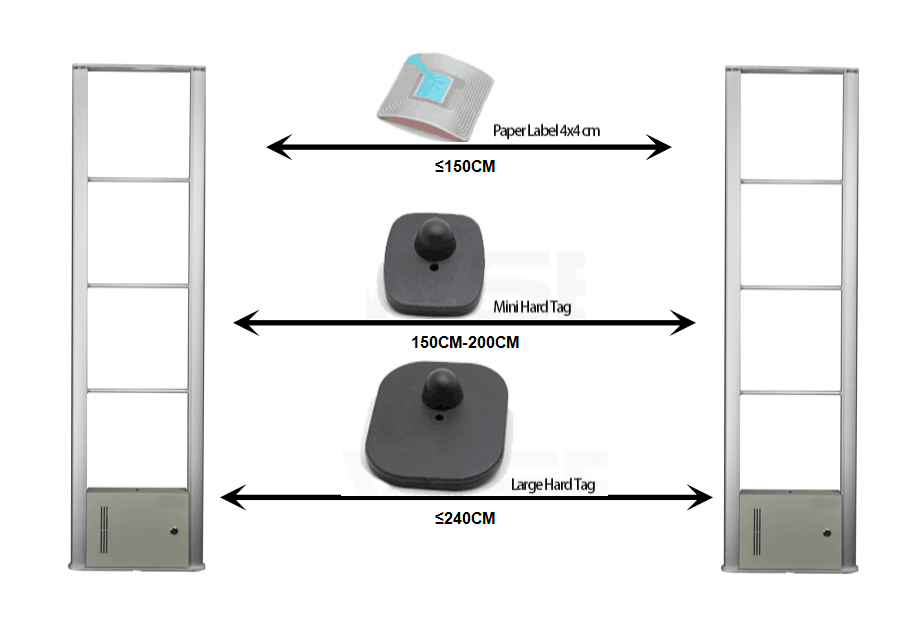Radio frequency (RF) systems


These tags are essentially an LC tank circuit (L for inductor, C for capacitor) that has a resonance peak anywhere from 1.75 MHz to 9.5 MHz. The standard frequency for retail use is 8.2 MHz. Sensing is achieved by sweeping around the resonant frequency and detecting the dip.
Deactivation for 8.2 MHz label tags is typically achieved using a deactivation pad. In the absence of such a device, labels can be rendered inactive by punching a hole, or by covering the circuit with a metallic label, a "detuner". The deactivation pad functions by partially destroying the capacitor. Though this sounds violent, in reality, both the process and the result are unnoticeable to the naked eye. The deactivator causes a micro short circuit in the label. This is done by submitting the tag to a strong electromagnetic field at the resonant frequency, which induces voltages exceeding the capacitor's breakdown voltage.
In terms of deactivation, radio frequency is the most efficient of the three technologies (RF, EM, AM – there are no microwave labels) given that the reliable "remote" deactivation distance can be up to 30 cm (11.8 in). It also benefits the user in terms of running costs, since the RF de-activator only activates to send a pulse when a circuit is present. Both EM and AM deactivation units are on all the time and consume considerably more electricity. The reliability of "remote" deactivation (i.e. non-contact or non-proximity deactivation) capability makes for a fast and efficient throughput at the checkout.
Efficiency is an important factor when choosing an overall EAS solution given that time lost attempting to deactivate labels can be an important drag of cashier productivity as well as customer satisfaction if unwanted alarms are caused by tags that have not been effectively deactivated at the point of sale.
Deactivation of RF labels is also dependent on the size of the label and the power of the deactivation pad (the larger the label, the greater the field it generates for deactivation to take place. For this reason very small labels can cause issues for consistent deactivation). It is common to find RF deactivation built into barcode flat and vertical scanners at the POS in food retail especially in Europe and Asia where RF EAS technology has been the standard for nearly a decade. In apparel retail deactivation usually takes the form of flat pads of approx. 30x30 cm.
